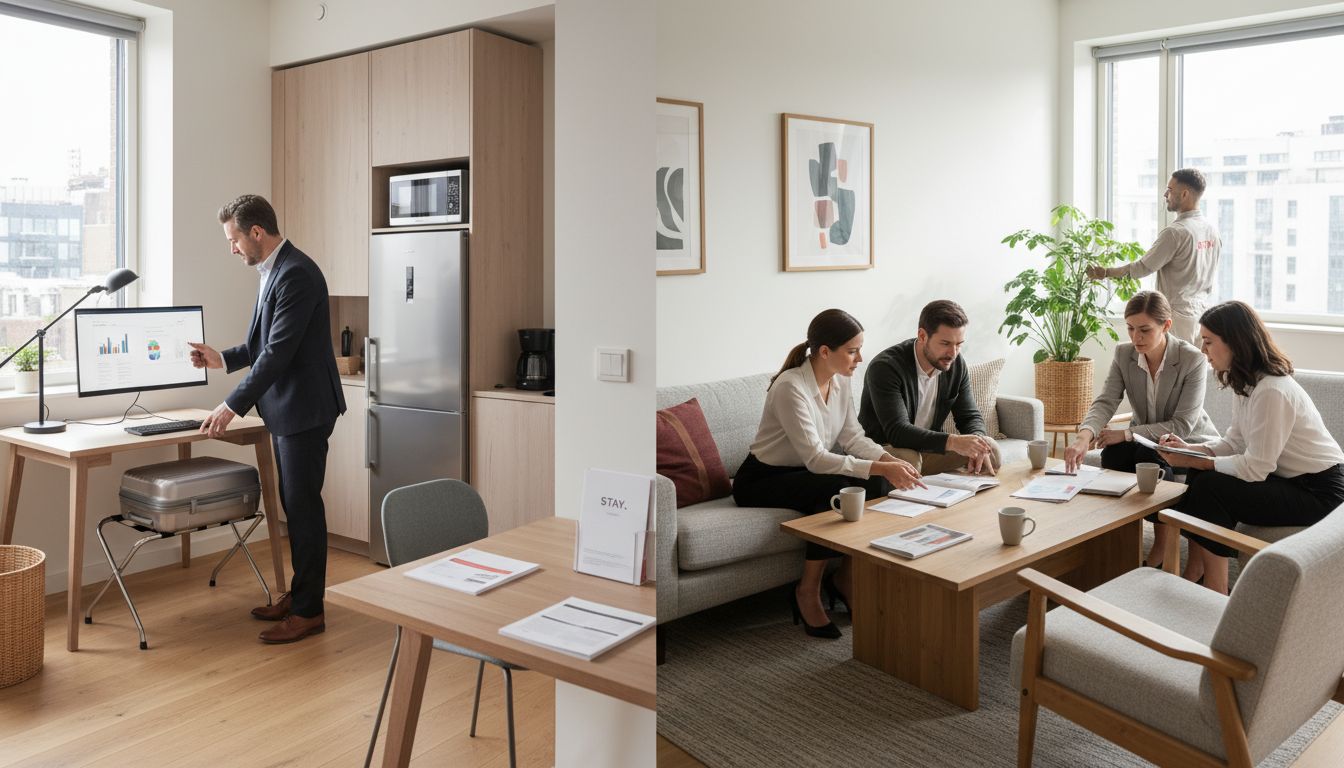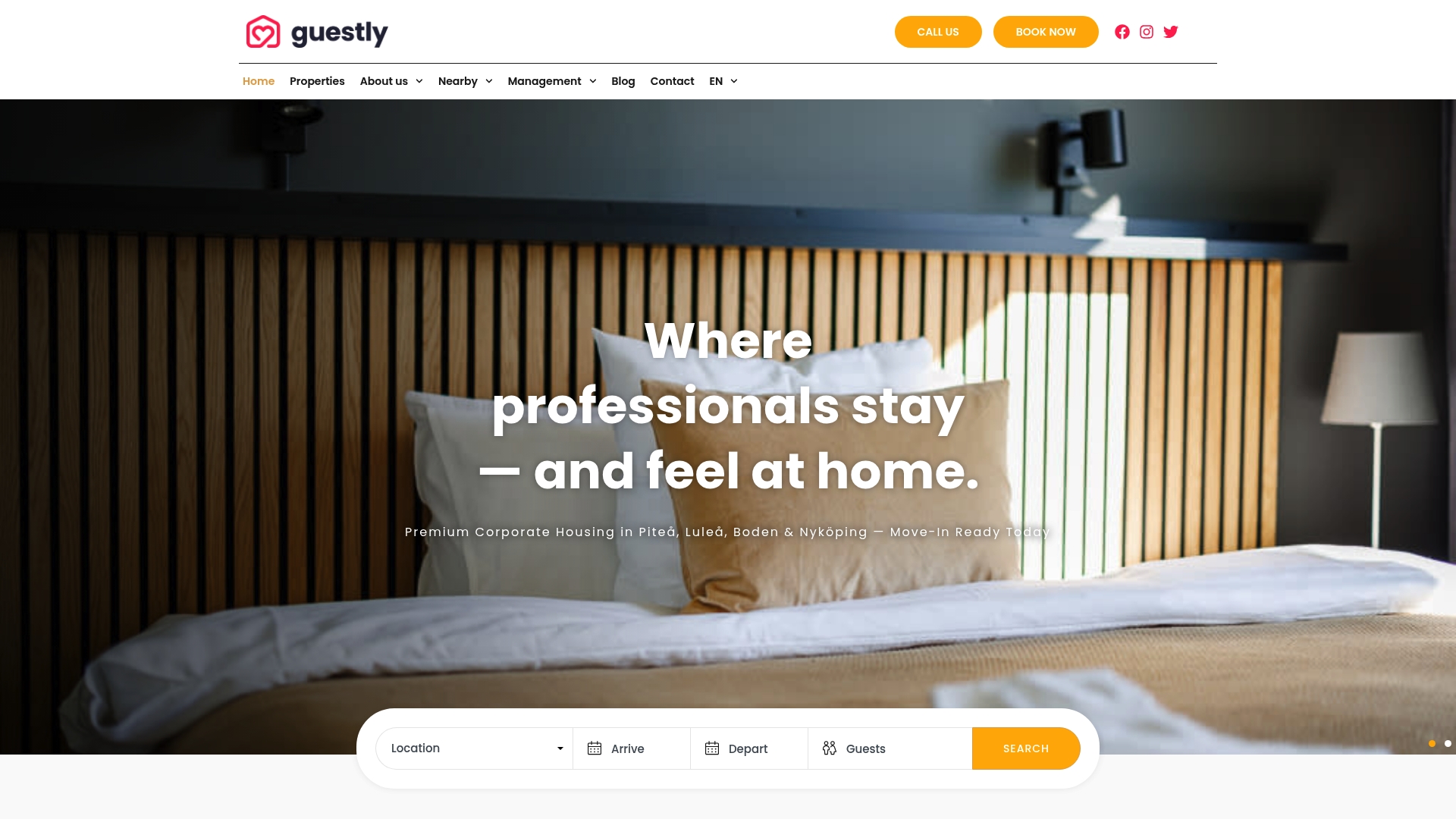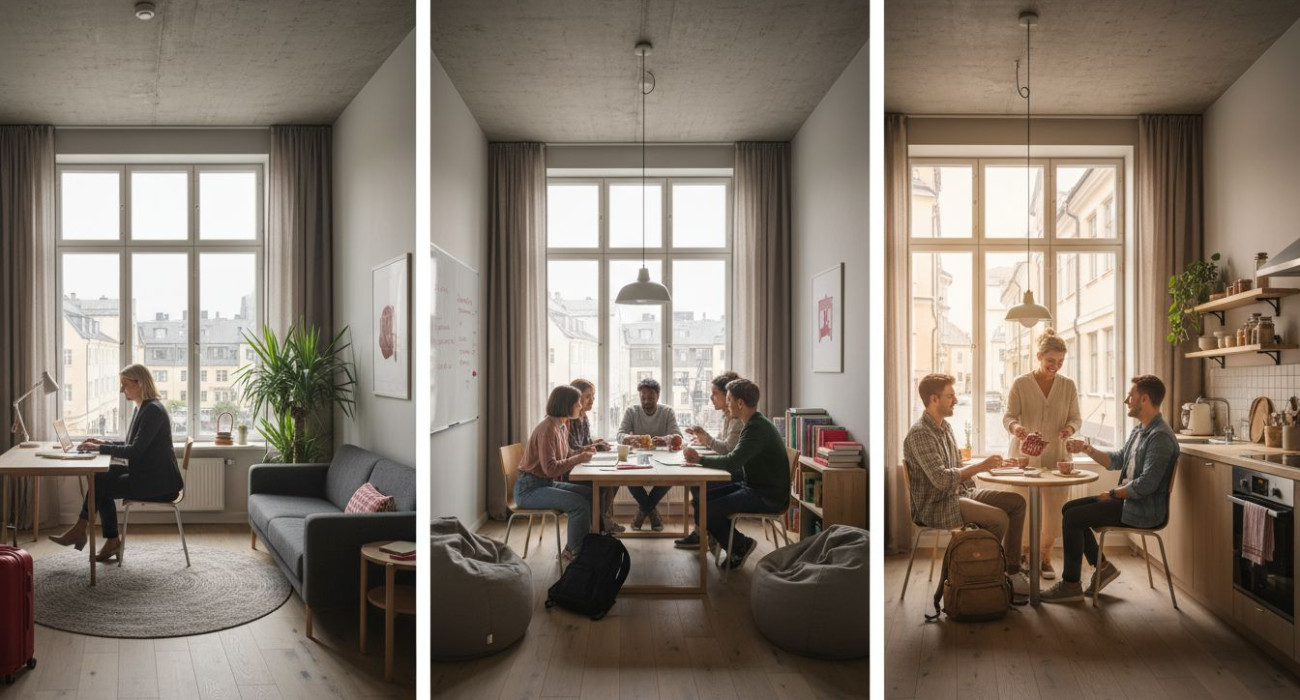More than 25 percent of people worldwide experience a significant housing transition due to work, education, or emergencies each year. Finding the right place to stay during these changes can affect everything from daily comfort to job performance. Understanding temporary accommodation solutions reveals how flexible, short-term housing can ease life’s disruptions and support well-being during stressful periods.
Table of Contents
- Defining Temporary Accommodation Solutions
- Comparing Major Types of Accommodation
- Serviced Apartments and Corporate Housing Explained
- Legal, Safety, and Contractual Obligations
- Cost Factors and Choosing the Right Option
Key Takeaways
| Point | Details |
|---|---|
| Temporary Accommodation | Flexible housing solutions that serve diverse populations during transitions, providing comfort and stability. |
| Types of Accommodation | Primary options include student residence halls, private rentals, and homestays, tailored to specific needs and lifestyles. |
| Serviced Apartments vs. Corporate Housing | Both offer complete amenities for short-term stays, facilitating smooth transitions for professionals with integrated services. |
| Legal and Cost Considerations | Understanding legal obligations and evaluating cost factors are essential for selecting suitable temporary accommodations. |
Defining Temporary Accommodation Solutions
Temporary accommodation represents flexible housing solutions designed to provide shelter during transitional periods or specific circumstances. According to Springer Link, these short-term housing arrangements serve diverse populations experiencing critical life transitions, such as relocating for work, studying, or responding to unexpected housing disruptions.
Key Characteristics of temporary accommodation include:
- Short duration housing arrangements
- Flexible occupancy terms
- Designed for specific transitional needs
- Adaptable to various personal and professional scenarios
Temporary housing solutions span a wide spectrum of options, European Asylum Support Office research indicates, ranging from movable structures like tents and containers to repurposed facilities including hotels, schools, and sports halls. These accommodations are strategically designed to meet immediate housing requirements while providing comfort and stability during periods of change.
The primary objective of temporary accommodation is to bridge housing gaps, offering individuals and professionals a reliable, comfortable living environment that supports their current life stage or professional transition. Whether you are a project team relocating, an executive on an extended assignment, or an individual navigating a significant life change, these housing solutions provide the flexibility and support necessary to maintain productivity and personal well-being.
Comparing Major Types of Accommodation
Navigating the landscape of temporary accommodation requires understanding the diverse options available to meet varying personal and professional needs. Education European Commission research highlights three primary accommodation categories that cater to different lifestyle preferences and requirements.
Primary Accommodation Types include:
- Student Residence Halls: Communal living spaces with shared amenities
- Private Rentals: Independent living with maximum flexibility
- Homestays: Immersive living experiences with local families
Beyond these traditional options, Habitat International research reveals a broader spectrum of accommodation solutions. These range from collective sites like repurposed shelters and dormitories for short-term stays to private housing solutions such as apartments and houses that offer longer-term stability and deeper integration opportunities.
The selection of appropriate temporary accommodation depends on multiple factors including duration of stay, budget, personal comfort, professional requirements, and desired level of social interaction. For professionals and project teams, options like serviced apartments or corporate housing often provide the optimal balance between comfort, convenience, and functionality. By understanding these varied accommodation types, individuals can make informed decisions that best support their unique transitional living needs.
Here’s a comparison of the main temporary accommodation types:
| Accommodation Type | Living Arrangement | Amenities Provided | Typical Flexibility |
|---|---|---|---|
| Student Residence Halls | Shared rooms and facilities | Communal kitchen Laundry |
Moderate Semester-based |
| Private Rentals | Entire flat or house | Varies Self-managed |
High Negotiable |
| Homestays | Live with local hosts | Home-cooked meals Utilities |
Moderate Host-dependent |
| Serviced Apartments | Private, fully furnished units | Housekeeping Utilities Wi-Fi |
High Short-term leases |
| Corporate Housing | Residential-style, for professionals | Cleaning Maintenance Utilities |
High Project-based stays |
Serviced Apartments and Corporate Housing Explained
ArXiv research defines serviced apartments as fully furnished living spaces designed for short-term stays, offering a unique blend of residential comfort and professional-grade amenities.
 These accommodations go beyond traditional housing by providing comprehensive services that transform temporary living into a seamless experience.
These accommodations go beyond traditional housing by providing comprehensive services that transform temporary living into a seamless experience.
Key Features of Serviced Apartments:
- Fully furnished living spaces
- Housekeeping services
- Integrated utility management
- Flexible lease terms
- Professional-grade amenities
Corporate housing, as outlined by ArXiv research, represents a specialized accommodation solution tailored specifically for business professionals undertaking extended assignments. These spaces are strategically designed to facilitate smooth transitions, combining the comfort of a residential environment with essential professional support services like cleaning and maintenance.
The primary distinction between serviced apartments and traditional rentals lies in their holistic approach to temporary living. While standard accommodations often require tenants to manage multiple logistical challenges, these modern housing solutions anticipate and address professionals’ complex needs. For project teams, consultants, and executives requiring reliable, high-quality temporary housing, serviced apartments and corporate housing offer an integrated living solution that prioritizes comfort, convenience, and operational efficiency.

Legal, Safety, and Contractual Obligations
Navigating the complex landscape of temporary accommodation requires a comprehensive understanding of legal and safety frameworks. Council of Europe research highlights the critical importance of compliance with local housing regulations and ensuring adequate living conditions for all occupants.
Key Legal and Safety Considerations include:
- Adherence to local housing regulations
- Verification of structural safety standards
- Clear documentation of occupancy terms
- Comprehensive insurance coverage
- Transparent cost structures
- Defined maintenance responsibilities
The contractual landscape of temporary accommodation demands meticulous attention to detail. According to the Council of Europe research, effective agreements must explicitly outline the responsibilities and expectations of both property providers and occupants. This includes precise definitions of duration, financial obligations, maintenance protocols, and potential exit clauses.
For professionals and organisations, understanding these legal nuances is paramount. Robust contracts protect both parties, mitigate potential disputes, and create a transparent framework for temporary housing arrangements. By prioritising clear communication, comprehensive documentation, and mutual understanding, temporary accommodation providers can establish trust and ensure a seamless, secure living experience for their guests.
Cost Factors and Choosing the Right Option
Selecting the ideal temporary accommodation requires a strategic approach to evaluating cost factors and personal requirements. OECD research underscores the complexity of this decision, highlighting multiple interconnected variables that influence housing choices.
Critical Cost Considerations include:
- Base rental pricing
- Utility expenses
- Location proximity
- Duration of stay
- Amenities included
- Transportation accessibility
Global Health Research emphasizes that effective accommodation selection extends beyond mere financial calculations. The optimal choice balances economic constraints with lifestyle compatibility, ensuring that the living environment supports professional performance and personal well-being.
Ultimately, choosing temporary accommodation is an intricate process of aligning financial practicality with individual needs. Professionals must conduct comprehensive assessments, comparing total cost of living against potential productivity gains, comfort levels, and long-term convenience. By approaching the selection methodically and prioritizing both economic efficiency and personal comfort, individuals can secure temporary housing that genuinely enhances their overall living and working experience.
Discover Seamless Temporary Accommodation Solutions with Guestly Homes
Finding the right temporary accommodation can be overwhelming when you need flexibility, comfort, and reliable services all in one place. This guide highlights the challenges faced by professionals and individuals seeking short to medium-term housing options that support productivity without compromise. At Guestly Homes, we understand the importance of fully managed serviced apartments and corporate housing that deliver a home-like atmosphere combined with hotel-grade consistency.
With Guestly Homes, you gain:
- Hassle-free living tailored to your stay from 10 nights up to 12 months
- Premium, fully furnished spaces designed to foster calm and focus
- Transparent and flexible terms that align with your project or personal needs

Ready to experience temporary housing that truly works for you or your team? Explore how our expert management and carefully curated homes can simplify your transitional stay. Visit Guestly Homes today to find out more and secure your ideal accommodation. For property owners seeking stable income with expert property activation, learn about our Revenue Share Model or Arbitrage Model that offer confidence and partnership without the usual headaches.
Frequently Asked Questions
What types of temporary accommodation are available?
Temporary accommodation options include student residence halls, private rentals, homestays, serviced apartments, and corporate housing, catering to various personal and professional needs.
What are the key features of serviced apartments?
Serviced apartments are fully furnished living spaces offering amenities such as housekeeping, integrated utility management, flexible lease terms, and professional-grade facilities, making them ideal for short-term stays.
How do corporate housing and serviced apartments differ?
Corporate housing is specifically designed for business professionals on extended assignments, focusing on seamless transitions and professional support. Serviced apartments, while also suited for short-term stays, cater to a broader audience seeking residential comfort and amenities.
What should I consider when choosing temporary accommodation?
When selecting temporary accommodation, consider factors such as duration of stay, budget, desired amenities, location proximity, social interaction level, and overall comfort to ensure the accommodation meets your specific needs.



